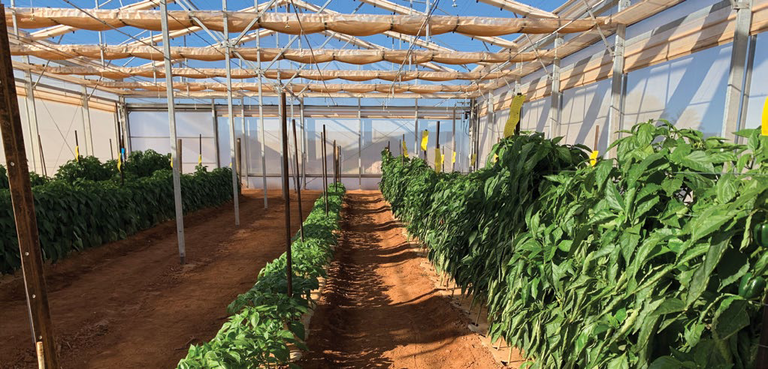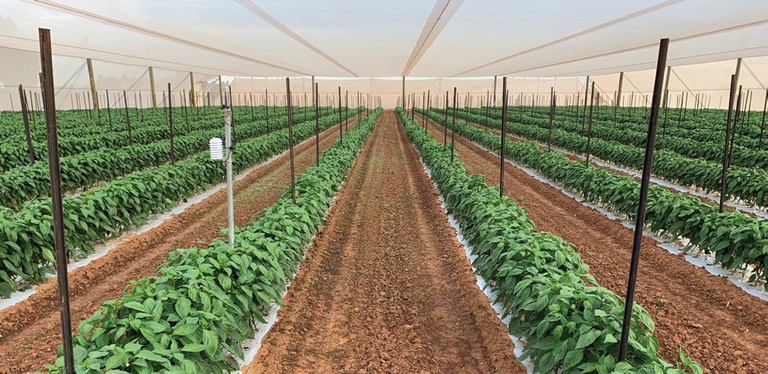SHADE HOUSE AND RETRACTABLE ROOF
production system
A benefit cost analysis
Two protected cropping structures, shade housing (with 30% shade) and the Rafter-type Retractable Roof Production System (RRPS) were compared for growing red capsicums in the Carnarvon region of Western Australia.
Authors Manju Radhakrishnan, Senior economist, DPIRD; Peter Gartrell, Senior economist, DPIRD; and Giao Nguyen, Research scientist, DPIRD
VEGETABLE farming in Carnarvon faces a few threats that affect growers’ profitability, including adverse weather events, severe insect pests and diseases outbreaks. Coupled with rising input costs, these events are severely affecting the profitability of farming businesses. While Carnarvon is well resourced with land and water and a climate conducive for the counter-seasonal (counter to the southwest of WA) production of vegetables; these adverse factors prevent crops achieving the full potential of the growing area. More worryingly, both frequency and severity of pest and disease incidence is increasing in recent years. While there is less control over the rising input cost, appropriate capital investment may be able to manage, or significantly reduce, the impact of weather events and pest and disease incidence, by using modern technologies including protected cropping structures. With this goal in mind, the research station installed a protected cropping facility with a retractable roof (RRPS). Under a funding proposal the Department also provided grants to eligible growers in the area to install shade houses for their fruit and vegetable production.
While both structures appear to be beneficial in increasing the yield compared to open field production, costs and benefits differ widely and a detailed analysis with larger sample size is necessary to rank one over the other, to make informed recommendations.
Methodology
The cost incurred, and benefits realised from the two structure types were compiled using data from the research station, along with face-to-face interviews with the growers and other stakeholders.


• The frequency, intensity and timing of pest and disease infestation can affect the yield in shade houses however RRPS can withstand high-level pest infestation due to full enclosure of crops (assumption based on research station experiment). • The probability of a ‘year with no major infestation’ is assumed to be 35%, mid-season infestation 30% and early season infestation 30%. • Crop loss is highest with an early season infestation, where the yield will reduce to one fourth of a normal year. With a mid-season infestation, yield will come down to half. • Both structures allow the growers to extend the harvest season and give protection from sun and birds. Usually in open field production, growers can harvest the
• Based on the historical incidence of cyclone from 1970 to 2024, the probability of cyclone is assumed to be one damaging cyclone in eight years. • The highest windspeed recorded in Carnarvon was 167 km/hour (Lantzke 2019). Rafter type RRPS can resist windspeed up to 177 km/ hour when the roof and walls are closed. Hence, RRPS is assumed to be not susceptible to cyclones experienced in Carnarvon area. Complete crop damage and some structural damage is assumed for shade house. • The impact of flooding is not assessed here, as both structures are susceptible to flooding and DPIRD does not recommend growing capsicum in flood prone areas.